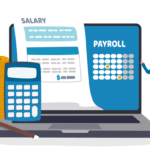Business owners and human resource professionals spend a lot of time looking for great coverage for their hardworking employees. In the search process, it’s important to have a foundational understanding of the Affordable Care Act, or the ACA. Read on for the basics of ACA benefits eligibility for small to mid-size businesses.
What is the Affordable Care Act (ACA)?
The ACA provides options for individuals, families, and the employees of small to mid-size businesses to enroll in health coverage. The ACA was passed into law in 2010, although it has not been fully implemented until January 1 of 2020. The legislation mandates that employers must offer health insurance or pay a penalty. The health insurance employers offer must be affordable and provide a minimum value to 95% of the employer’s full-time employees and their children who are under twenty-six years of age.
Commonly referred to as the “ACA Employer Mandate,” the aforementioned rule applies to employers with fifty or more full-time employees. Under the ACA, all employees working thirty or more hours weekly are deemed full-time.
The ACA has also established Health Insurance Marketplaces. Individuals can obtain health insurance coverage through the Marketplaces for themselves and their dependents, if they meet certain eligibility requirements.
What are the Federal Eligibility Requirements for the Affordable Care Act (ACA)?
There are three key federal requirements for ACA Eligibility. These requirements apply in all fifty U.S. States. They are:
- Individuals must be either U.S. citizens, U.S. nationals, or noncitizens who are lawfully present in the U.S. for the entire time they plan to have health coverage;
- Individuals must not be currently incarcerated, and;
- Individuals must live in the United States and meet state-specific residency requirements for the Marketplace where they wish to obtain coverage.
Is there an Income Requirement for Affordable Care Act (ACA) Eligibility?
If your employees meet the three federal requirements for ACA eligibility described above, you are ready to determine whether some or all of your employees are eligible according to state standards. The state-specific standards relate to income requirement eligibility. Medicaid.gov, a website maintained by the federal government, publishes a table laying out eligibility levels in each state for key coverage groups. When looking at the table, it’s helpful to know what the percentages mean: the numerical requirements are income standards, expressed as a percentage of the federal poverty level.
You can also view a “profile” of any state using Medicaid.gov’s state profile tool. This tool expands upon state-specific income eligibility information by state.
My Employees Meet Both Federal and State Eligibility Requirements for the ACA, Now What?
Under the ACA, a health insurance plan that is certified by a Marketplace is called a Qualified Health Plan, or QHP. A QHP provides health benefits to your employees, although they still may be assessed deductibles and co-pays.
If employees have met eligibility requirements, they can enroll in QHPs during the annual Open Enrollment Period, which is the period between November 1 and December 15 for the year 2021. For employees who enroll during open enrollment, coverage begins on January 1, 2022. Employees can also enroll during a Special Enrollment Period (SEP) at any time of the year if they experience certain life events, like marriage, or the birth/adoption of a child. This concept is similar to “qualified life event” special enrollment of traditional private-sector health insurance plans.
Making sense of the Affordable Care Act is tough for even the most seasoned HR professionals. Need help determining whether your employees are ACA-eligible? Your organization may benefit from access to certified HR experts in your health coverage decision-making process. If so, it’s time to contact Benely.






